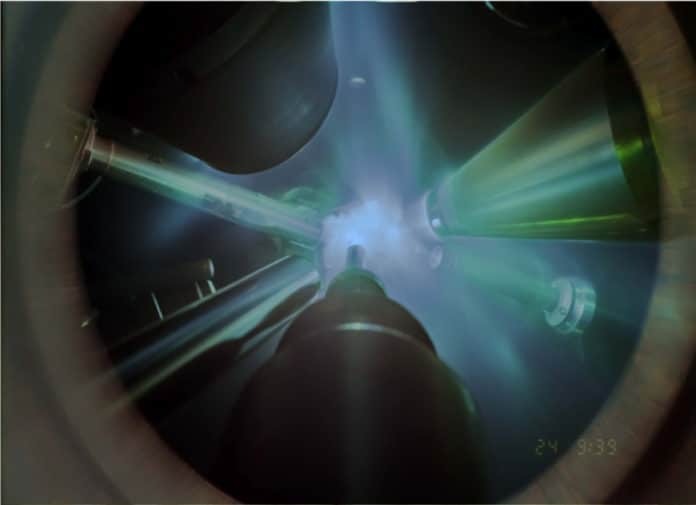A new work exploring the high-pressure behavior of shock-compressed tantalum has shown that the tantalum tends to be stable at high pressure. It maintains the body-centered cubic (BCC) phase until it melts.
Scientists at Lawrence Livermore National Laboratory (LLNL) experimented at the Omega Laser Facility at the University of Rochester’s Laboratory for Laser Energetics (LLE). Scientists analyzed the melting behavior of tantalum at multi-megabar pressures on the nanosecond timescale.
Rick Kraus, a lead author of the paper, said, “This work provides an improved physical intuition for how materials melt and respond at such extreme conditions. These techniques and improved knowledge base are now being applied to understanding how the iron cores of rocky planets solidify and also to more programmatically relevant materials as well.”
This work is essential for a more extensive effort to develop dynamic compression platforms to compelling the melting and solidification advances precisely. It helps scientists ensure that they are simulating these transitions accurately while foreseeing the aftereffects of a dynamic event, such as forming an impact crater or accelerating an ablator at the National Ignition Facility.
Federica Coppari, a co-author of the study, said, “This work represents a new frontier for the in-situ characterization of materials under extreme conditions. In previous experiments, melting under shock compression had been inferred indirectly by discontinuous changes in the shock velocity or the optical properties. Being able to ‘watch’ the structure transform from a solid to a liquid is extremely exciting.”
With clear determination of melt at such extreme conditions and on short-timescale experiments, the team helped constrain the time-dependent melting behavior and find that dynamic experiments such as these are observing the equilibrium phase boundary.
For the experiment, scientists used a single beam of the Omega laser to generate a strong shockwave in the tantalum sample. They created a plasma-based X-ray source for the X-ray scattering measurements by using another 12 beams.
In each successive experiment, the team increased the strength of the shockwave in the sample, evaluating the state of the tantalum using the X-ray diffraction diagnostic, called Powder X-Ray Diffraction Image Plate (PXRDIP).
Kraus said, “We observed a transition from solid BCC to a mixed phase of BCC and liquid tantalum, to completely liquid tantalum. Using the transition pressures we obtained from these experiments and previous equation-of-state information about tantalum, we were also able to constrain the melting temperature of tantalum.”
“Tantalum metal has seen tremendous study under high pressure with discrepant melting curve measurements. Therefore, we need to be able to resolve controversies in highly studied materials so that we can ensure we are using the right techniques that are accepted by the research community.”
Journal Reference:
- R. G. Kraus et al., Melting of Tantalum at Multimegabar Pressures on the Nanosecond Timescale, Physical Review Letters (2021). DOI: 10.1103/PhysRevLett.126.255701
